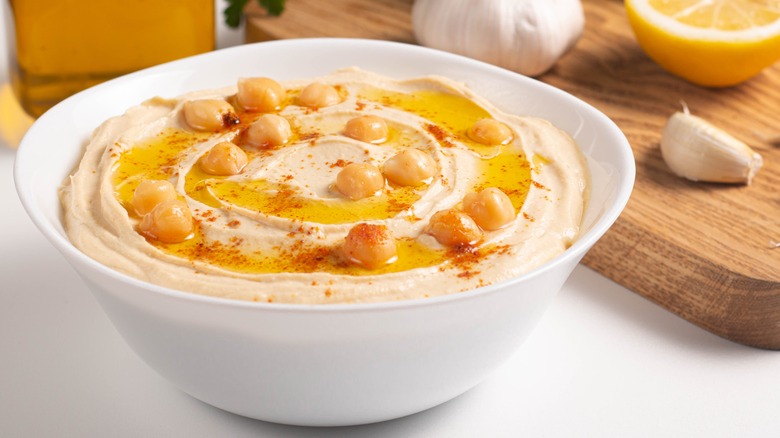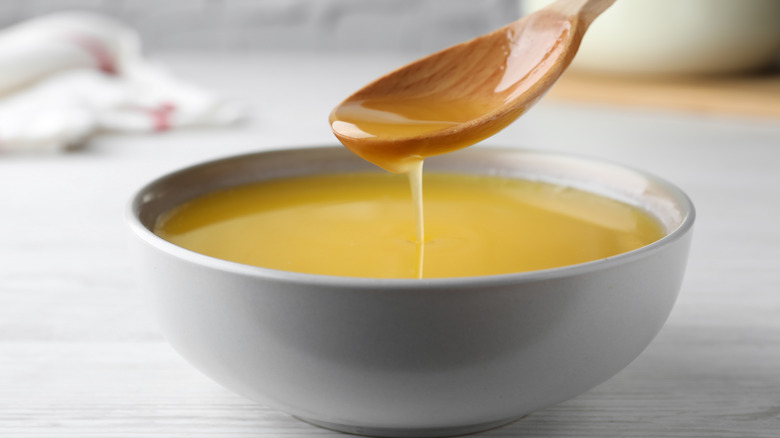The Key Ingredient Swap Used In Turkish Hummus
In the late 1990's, much of America didn't know what hummus was; according to Today, they were spending about $5 million on the product annually. Twenty years later, sales of hummus in grocery stores topped $725 million, and Business Market Insights predicts that number will reach $1.5 billion by the year 2027. Meanwhile, in the Middle East and Mediterranean, people have been eating hummus regularly for thousands of years.
While the exact origin is unclear, we can gather from the history of hummus' ingredients that the dish existed generations before Americans became familiar with it. According to BBC Travel, chickpeas date back to Turkey ten thousand years ago, with tahini, the sesame seed paste crucial to hummus, which is mentioned in some Arabic cookbooks from the 1200s. Food Republic also points out that the first mention of hummus as a dish came from 13th-century Egypt. Several countries in these regions lay fierce claims on the dish, including Israel, Turkey, Greece, Syria, and Lebanon — all countries where hummus plays an important culinary and cultural role to its citizens. And each of these places makes its hummus slightly different from one another. The basis of most hummus includes chickpeas, tahini, lemon juice, garlic, and olive oil, according to MasterClass, but one ingredient substitution in Turkish hummus makes it all the more crave-able and delicious.
All buttered up
To make hummus, softened chickpeas (either boiled or from a can) are blended into a paste. Tahini, lemon juice, and garlic are then added and pureed with the chickpeas. Olive oil is slowly drizzled in to give hummus its signature smooth texture. In Turkey, however, melted butter is sometimes substituted for the olive oil, per MasterClass. In a recipe for Warm Hummus from the New York Times, the author uses olive oil but notes that in the traditional Turkish method, a generous amount of butter would be poured over the top of the hummus before being briefly baked.
The idea of serving it warm is also typical of the Turkish process. The blog Give Recipe mentions that, in Southern Turkey, warm hummus is served as a lunch dish alongside fresh vegetables and pickles. And MasterClass goes on to say that Turkish hummus often includes extra tahini for a more robust sesame flavor and that pastirma, a dry, seasoned beef is a popular addition for it. It's never been easier to get your hands on a container of hummus at the store, but a homemade version will nearly always be superior, and it is an incredibly simple dish to make. Just remember to keep that butter nearby.

